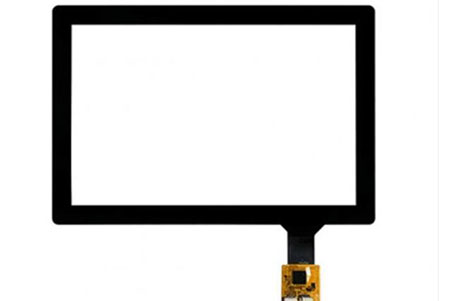What are the parts of the LCD touchscreen?
Views: 1000 Update date: Jun 10,2023
In this era of advanced technology, LCD touchscreens have become ubiquitous, gracing our smartphones, tablets, laptops, and even our cars. But have you ever wondered what lies beneath the sleek and glossy surface of these touch-sensitive wonders?
1. LCD Panel
The heart and soul of any LCD touchscreen is the LCD panel. This thin and transparent display panel is responsible for producing the vibrant images and visuals we see on our screens. It consists of numerous liquid crystal cells that can be individually controlled to manipulate the light passing through them. These cells are divided into tiny segments, allowing for precise control of pixels and enabling the formation of texts, images, and videos.
2. Touch Sensor
Directly above the LCD panel lies the touch sensor, the ingenious technology that detects and interprets our touch inputs. The touch sensor is typically made of a transparent conductive material, such as indium tin oxide (ITO) or a more advanced material like graphene. When we touch the screen, it creates an electrical disturbance that is sensed and converted into digital signals by the touch sensor, enabling the device to respond accurately to our gestures.
3. Controller
For an LCD touchscreen to illuminate the images produced by the LCD panel, a backlight is essential. Positioned behind the LCD panel, the backlight is a light source that evenly illuminates the display, enhancing visibility in different lighting conditions. Traditional LCD touchscreens utilize a cold cathode fluorescent lamp (CCFL) as the backlight, while more modern versions employ energy-efficient light-emitting diodes (LEDs) for improved brightness and color reproduction.
5. Polarizing Filters
Working in harmony with the LCD panel, polarizing filters contribute to enhancing image quality and minimizing glare. These optical filters are placed in front of the LCD panel and work by selectively filtering light waves based on their polarization. By controlling the polarization of light passing through the LCD panel, polarizing filters enhance contrast, reduce reflections, and improve the overall viewing experience.
6. Digitizer
In some LCD touchscreens, an additional component called a digitizer is incorporated. The digitizer is responsible for capturing and interpreting more advanced touch inputs, such as multi-touch gestures or pressure sensitivity. It can be either an overlay on the LCD panel or integrated within the touch sensor itself. The digitizer adds an extra layer of functionality, enabling features like pinch-to-zoom, handwriting recognition, and pressure-sensitive drawing.
7. Enclosure and Protective Layer
To safeguard the delicate components of the LCD touchscreen, an enclosure and protective layer are crucial. The enclosure provides structural support and houses the intricate parts, while the protective layer shields the LCD panel and touch sensor from scratches, dust, and other external factors. Common protective layers include tempered glass, Gorilla Glass, or polycarbonate films, ensuring durability and longevity.
LCD touchscreens are a remarkable fusion of engineering and innovation, allowing us to interact effortlessly with our digital world. By understanding the various components that comprise these touch-sensitive marvels, we can truly appreciate the ingenuity behind their creation.
So, the next time you swipe, tap, or pinch on an LCD touch screen, take a moment to acknowledge the intricate dance of technology happening beneath your fingertips. From the LCD panel to the touch sensor, the controller to the backlight, each part plays a vital role in delivering an immersive and intuitive user experience. Embrace the wonders of LCD touchscreens, and let your digital adventures continue to unfold with every touch.
1. LCD Panel
The heart and soul of any LCD touchscreen is the LCD panel. This thin and transparent display panel is responsible for producing the vibrant images and visuals we see on our screens. It consists of numerous liquid crystal cells that can be individually controlled to manipulate the light passing through them. These cells are divided into tiny segments, allowing for precise control of pixels and enabling the formation of texts, images, and videos.
2. Touch Sensor
Directly above the LCD panel lies the touch sensor, the ingenious technology that detects and interprets our touch inputs. The touch sensor is typically made of a transparent conductive material, such as indium tin oxide (ITO) or a more advanced material like graphene. When we touch the screen, it creates an electrical disturbance that is sensed and converted into digital signals by the touch sensor, enabling the device to respond accurately to our gestures.
3. Controller
To orchestrate the seamless interaction between the LCD panel and the touch sensor, a controller plays a pivotal role. This intelligent component acts as the mediator, receiving the touch signals from the touch sensor and relaying them to the device's processor. The controller also coordinates the synchronization of the touch response with the displayed content, ensuring a smooth and responsive user experience.
For an LCD touchscreen to illuminate the images produced by the LCD panel, a backlight is essential. Positioned behind the LCD panel, the backlight is a light source that evenly illuminates the display, enhancing visibility in different lighting conditions. Traditional LCD touchscreens utilize a cold cathode fluorescent lamp (CCFL) as the backlight, while more modern versions employ energy-efficient light-emitting diodes (LEDs) for improved brightness and color reproduction.
5. Polarizing Filters
Working in harmony with the LCD panel, polarizing filters contribute to enhancing image quality and minimizing glare. These optical filters are placed in front of the LCD panel and work by selectively filtering light waves based on their polarization. By controlling the polarization of light passing through the LCD panel, polarizing filters enhance contrast, reduce reflections, and improve the overall viewing experience.
6. Digitizer
In some LCD touchscreens, an additional component called a digitizer is incorporated. The digitizer is responsible for capturing and interpreting more advanced touch inputs, such as multi-touch gestures or pressure sensitivity. It can be either an overlay on the LCD panel or integrated within the touch sensor itself. The digitizer adds an extra layer of functionality, enabling features like pinch-to-zoom, handwriting recognition, and pressure-sensitive drawing.
7. Enclosure and Protective Layer
To safeguard the delicate components of the LCD touchscreen, an enclosure and protective layer are crucial. The enclosure provides structural support and houses the intricate parts, while the protective layer shields the LCD panel and touch sensor from scratches, dust, and other external factors. Common protective layers include tempered glass, Gorilla Glass, or polycarbonate films, ensuring durability and longevity.
LCD touchscreens are a remarkable fusion of engineering and innovation, allowing us to interact effortlessly with our digital world. By understanding the various components that comprise these touch-sensitive marvels, we can truly appreciate the ingenuity behind their creation.
So, the next time you swipe, tap, or pinch on an LCD touch screen, take a moment to acknowledge the intricate dance of technology happening beneath your fingertips. From the LCD panel to the touch sensor, the controller to the backlight, each part plays a vital role in delivering an immersive and intuitive user experience. Embrace the wonders of LCD touchscreens, and let your digital adventures continue to unfold with every touch.




